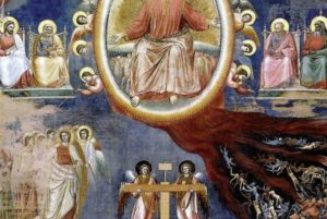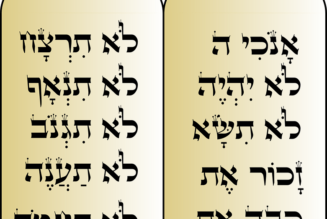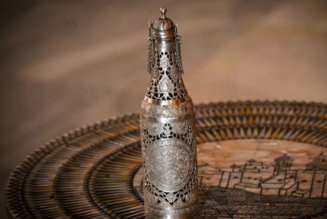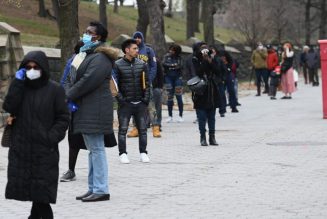ROME – For those with ears to hear, every so often it’s actually possible to detect the sound of history’s tectonic plates as they shift. Such was the case Thursday, with a remarkable gesture by Pope Francis of inscribing a group of Coptic Christian martyrs into the Roman Martyrology, Catholicism’s official compendium of saints.
The move was not quite completely unprecedented, since, as Vatican News pointed out, the martyrology was updated in 2001 with certain Orthodox saints who date from the period after the historical separation between Eastern and Western Christianity.


Still, this was the first time the martyrology was revised with the explicit approval of a non-Catholic cleric, in this case Coptic Pope Tawadros II – suggesting, in some sense, that non-Catholics can have a say in whom the Catholic Church chooses to venerate.
It was also the first time the newly inscribed martyrs are contemporaries, as these 21 martyrs (20 Egyptian Copts and one Ghanian Christian) were beheaded by ISIS in 2015.

The full implications of the act will become clear only with time. For now, four immediate observations suggest themselves.
- It’s a rare case in which a papal act is likely to play well with both the Catholic left and right.
- For a pope often accused of breaking with his immediate predecessors, this decision places Francis squarely in continuity with Pope John Paul II.
- The decision may increase pressure on Francis to beatify and canonize his own new martyrs from the Middle East.
- It also upends the saying, “Sometimes the only way around is through.” With regard to ecumenical progress, Francis seems to be suggesting that sometimes the best way through is around.
Left and Right
To traffic in wild over-generalizations, ecumenism, meaning the press for Christian unity, tends to be a greater concern for Catholic moderates and progressives. Conservatives sometimes fret that too much doctrinal ground may be given up in the search for consensus, and are likely to emphasize Catholic distinctiveness.
On the other hand, anti-Christian persecution, especially in its 21st century forms, often finds greater traction among conservatives. That’s especially so given that numerically, the largest number of new Christian martyrs today tend to be victims of Islamic fundamentalism. Liberals often worry that too much emphasis on anti-Christian persecution may lead to Islamophobia, and also may be exploited to gin up sympathy for conservative positions in the Western culture wars.

In this instance, Pope Francis has performed a deeply ecumenical act by honoring martyrs to Islamic extremism. While his motives were clearly pastoral, the immediate political reactions are nonetheless likely to be unusually compact, and in a positive direction.
Continuity with John Paul II
As early as his 1994 apostolic letter Tertio Millenio Adveniente anticipating the Great Jubilee of 2000, John Paul II began calling for a joint Christian memorial of the new martyrs. He repeated the idea in 1995’s Ut Unum Sint, his encyclical on ecumenism. In 1998, his preparatory commission for the jubilee proposed a “Common Martyrology,” meaning a listing of martyrs that would be shared among all the Christian churches.
That proposal ran into a theological buzzsaw, torpedoed by critics who said it would be incoherent to propose role models of holiness who went to their deaths upholding beliefs the Catholic Church officially regards as heretical.
Nonetheless John Paul persisted, staging an ecumenical liturgy in 2000 at Rome’s Colosseum dedicated to new martyrs, including non-Catholics such as Martin Luther King Jr.
In that sense, Pope Francis on Thursday advanced a cause to which John Paul II was also devoutly devoted.
Catholic Martyrs
Ironically, the lone constituency likely to be disconcerted by Francis’s inclusion of the Copts are members of his own flock across the Middle East, who may wonder why the same papal solicitude isn’t being shown to their own martyrs.
An emblematic case would be the 48 Chaldean Catholics who were executed by Islamic militants at Our Lady of Salvation Church in Baghdad, Iraq, on Oct. 31, 2010, including an unborn child in the womb. Their sainthood cause has been languishing in Rome since 2019, despite the fact that Francis actually visited the site of their martyrdom during his trip to Iraq in 2021, including sitting in the very spot where Father Taher Abdal was shot to death.
Even more galling for many Iraqi Catholics, when Francis visited Mosul he didn’t even mention the four Chaldean Catholics killed there in 2007, including Father Ragheed Ganni and three subdeacons, and whose sainthood causes are also awaiting Vatican judgment.
Granted, simple inclusion in the Roman Martyrology is a less complicated and fraught act than formal beatification and canonization. For one thing, most theologians believe that canonization draws on a pope’s infallible teaching authority, while including someone in the martyrology does not.
Nevertheless, acting on Coptic Orthodox martyrs while delaying Catholics still is likely to rankle. As one sainthood expert put it Thursday, it may come off as “marketing in the guise of ecumenism.”
Around, Not Through
It’s often said that the best marriages begin as friendships, when the partners aren’t thinking about themselves as spouses but simply people bound by common interests and values. In the same vein, it may well be that Christian unity doesn’t begin with formal declarations of structural reintegration, but rather with expressions of common cause on other fronts.
In that sense, by honoring the martyrs of another Christian confession, to the extent of including them in the Catholic Church’s official daily prayer, and by doing so only with the blessing of the leader of that non-Catholic tradition, Pope Francis effectively has achieved a new degree of integration, only without calling it that.
Where will this lead? At present, it’s difficult to say. At a minimum, however, it opens a new set of possibilities for joint recognition of sanctity that didn’t exist before, and that alone can’t help but feel like momentum.







